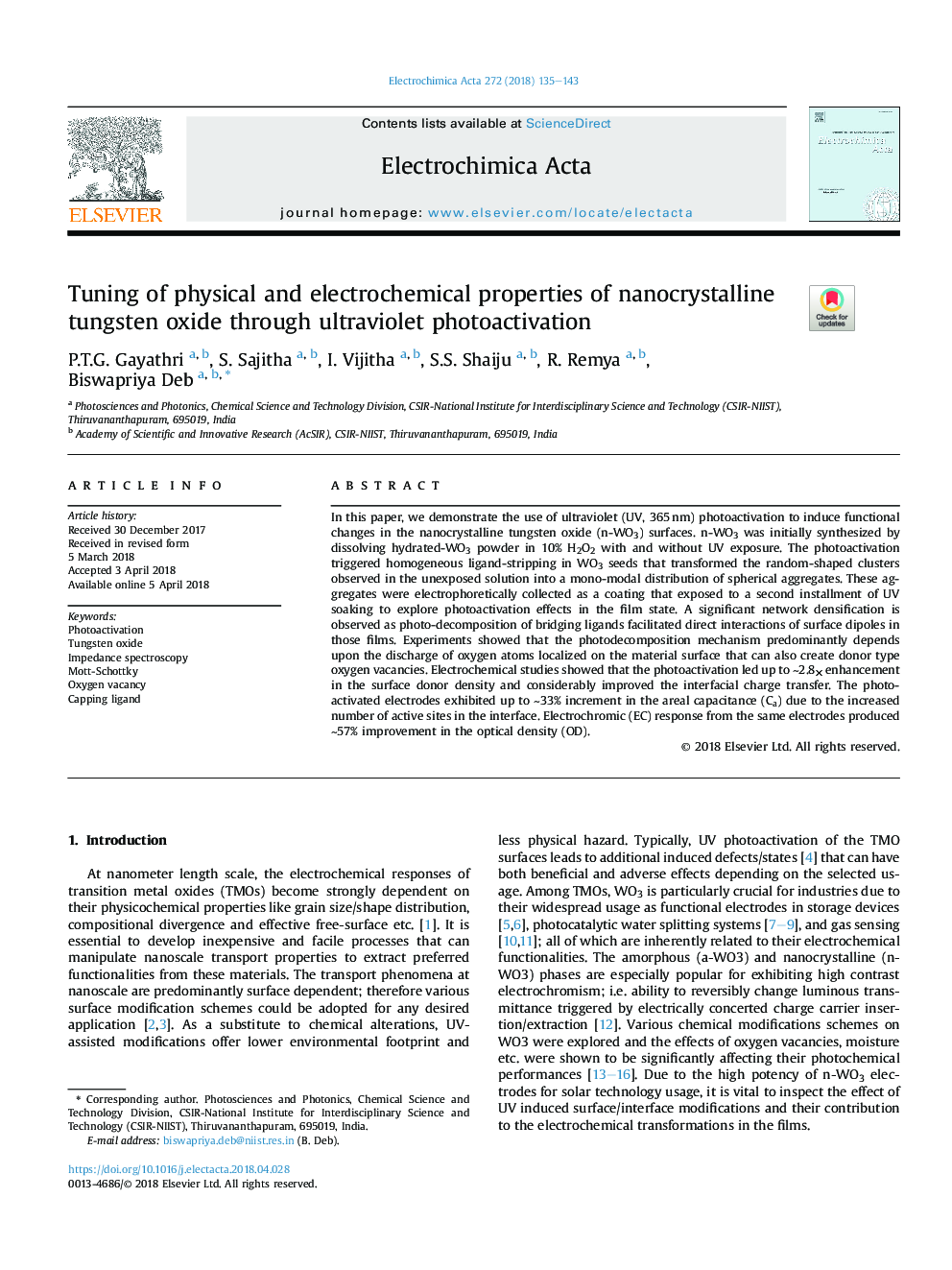| Article ID | Journal | Published Year | Pages | File Type |
|---|---|---|---|---|
| 6603148 | Electrochimica Acta | 2018 | 9 Pages |
Abstract
In this paper, we demonstrate the use of ultraviolet (UV, 365â¯nm) photoactivation to induce functional changes in the nanocrystalline tungsten oxide (n-WO3) surfaces. n-WO3 was initially synthesized by dissolving hydrated-WO3 powder in 10% H2O2 with and without UV exposure. The photoactivation triggered homogeneous ligand-stripping in WO3 seeds that transformed the random-shaped clusters observed in the unexposed solution into a mono-modal distribution of spherical aggregates. These aggregates were electrophoretically collected as a coating that exposed to a second installment of UV soaking to explore photoactivation effects in the film state. A significant network densification is observed as photo-decomposition of bridging ligands facilitated direct interactions of surface dipoles in those films. Experiments showed that the photodecomposition mechanism predominantly depends upon the discharge of oxygen atoms localized on the material surface that can also create donor type oxygen vacancies. Electrochemical studies showed that the photoactivation led up to â¼2.8à enhancement in the surface donor density and considerably improved the interfacial charge transfer. The photoactivated electrodes exhibited up to â¼33% increment in the areal capacitance (Ca) due to the increased number of active sites in the interface. Electrochromic (EC) response from the same electrodes produced â¼57% improvement in the optical density (OD).
Related Topics
Physical Sciences and Engineering
Chemical Engineering
Chemical Engineering (General)
Authors
P.T.G. Gayathri, S. Sajitha, I. Vijitha, S.S. Shaiju, R. Remya, Biswapriya Deb,
